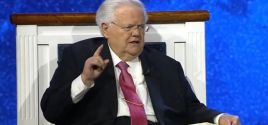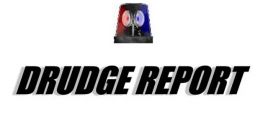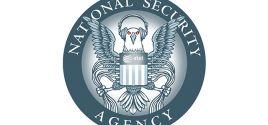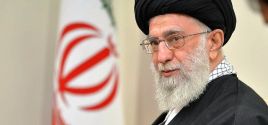When Healing Becomes a Crimeby D. Saul WeinerFeb. 10, 2007 |
Popular 
John Hagee Cheers Israel-Iran Battle as 'Gog and Magog War,' Will Lobby Congress Not to Deescalate

Right-Wing Media See Traffic Plummet in Wake of Algorithm Changes by Facebook, Google

Patriot ACT on Steroids: FISA Bill Forces 'An Enormous Range' of Businesses to Act as NSA Spies

Congress Introduces ADL-Backed 'Countering Antisemitism Act' to Police Online Speech

Reuters: Iran Gave 'Wide Notice' Days Before Attack on Israel
 Harry Hoxsey claimed to cure cancer using herbal remedies, and thousands of patients swore that he healed them. His Texas clinic became the world’s largest privately owned cancer center with branches in seventeen states, and the value of its therapeutic treatments was upheld by two federal courts. Even his arch-nemesis, the AMA, admitted his treatment was effective against some forms of cancer. But the medical establishment refused an investigation, branding Hoxsey the worst cancer quack of the century and forcing his clinic to Tijuana, Mexico, where it continues to claim very high success rates.1 Those interested in healing, politics, economics, or cancer will find a great deal of interest in Kenny Ausubel’s telling of the Hoxsey story. Ausubel is a meticulous investigative journalist and filmmaker, did prodigious research into the subject matter, and carefully presents the story, including interviews with several Hoxsey critics in orthodox medicine. Those familiar with the field of alternate medicine will recognize that Hoxsey’s persecution is not an isolated phenomenon; many practitioners who have been viewed as a threat to the dominant mode of practice have been attacked without justification. However, there are a number of elements of the Hoxsey story which make it a dramatic and fascinating one. For one, Hoxsey would not easily back down when the AMA began its smear campaign in the 1920’s. Hoxsey fought aggressively in the courts, made savvy use of the media to counter AMA propaganda, and challenged the establishment in medicine to perform a fair scientific study of his treatment. Ausubel presents great archival footage to bring these battles to light. Also vital to Hoxsey's case was the tremendous support of his patients and his ability to win over a variety of professionals who overcame their initial skepticism about his protocol. Finally,Hoxsey was also a successful oil man; in addition to his great determination and belief in his cause, he also had the financial wherewithal to carry on the good fight. In the end, though, the FDA put him out of business in 1960 based on alleged technical violations. Ausubel does a nice job of placing the Hoxsey story in the context of a centuries-old battle between 2 schools of medicine, the allopathic and the empiric. Allopathic doctors use aggressive treatments which they consider to be scientific. In the 19th century, these were mainly bleeding, the use of toxic minerals, and surgery. The empiric tradition emphasizes stimulating the body’s own defenses and favors the use of plant remedies; it is also based more on observation and experience than theory. Though there was a rivalry between the 2 schools during the 19th century, and doctors would denigrate empiric healers as quacks, there was a balance of power. Patients had substantive choices in terms of what type of healer they patronized. In the early 20th century, the AMA joined forces with the major financiers of the day to develop a lucrative approach to the practice of medicine, based on advances in surgery, the discovery of radiation, and the development of synthetic drugs. It pushed through changes in educational and licensing standards which served to exclude the empiric healers. In the process, allopathic medicine largely drove out the competition and acquired a monopoly on medical practice. While this history may not come as a shock to libertarian viewers, it would likely be eye-opening to those who subscribe to the conventional views that entities such as licensing boards and public health departments are working in the patient’s best interest. One patient in particular eloquently expresses the libertarian perspective when she states "I think that we should have freedom of information and then we should have freedom of choice, and that should be made available to the public, and then let them choose what they’re going to take … we’re all adults, mainly, and in charge of our own destiny and we should be allowed to go whatever route we think would be best for us." Advocates of economic freedom often talk about the greater efficiency that comes with a free market, in terms of higher quality, more choice, and lower cost. While all of these contentions are valid, the listener may not be moved by such a clinical presentation. In a great film such as this, we see that when healing becomes a crime, we put our very lives at stake. We have seen the tragic consequences that result when the state treats vices as crimes. Here we have the even greater absurdity of the virtuous act of healing getting twisted into a criminal offense. This documentary vividly demonstrates the high price we pay when we limit health freedom. Note D. Saul Weiner [send him mail] recently lost a parent to cancer. Copyright © 2007 LewRockwell.com |



